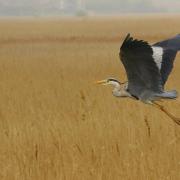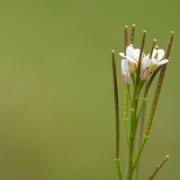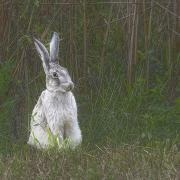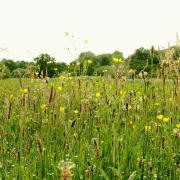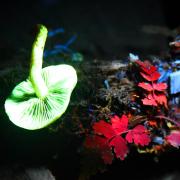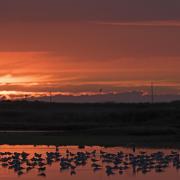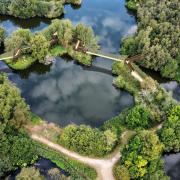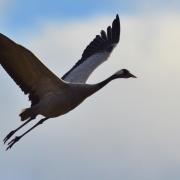Norfolk’s National Nature Reserves are places of wild beauty and magical landscapes – and yet many of us don’t even know they exist

Explore swathes of untouched sands, listen to a cacophony of nature’s noise while wandering through marsh and heathland or learn more about ancient buildings which are home to extraordinary creatures.
Nationwide there are more than 220 National Nature Reserves – with 22 in Norfolk alone. Some are well known and are visited by thousands of people every year – such as Winterton Dunes, Foxley Woods, parts of the Holkham Estate and How Hill; some cover huge expanses of our landscape – such as The Wash, which covers almost 8,800 hectares and is the largest NNR in the country; others are small, secret corners of the countryside such as Swanton Novers and Calthorpe Broad.
NNRs were established to protect important habitats, species and geology and to provide ‘outdoor laboratories’ for research. They also provide schools, special interest groups and the public with the chance to see wildlife and learn more about conservation.
Around two thirds of the country’s reserves are managed by Natural England with the rest looked after by other organisations and agencies, such as the National Trust, Forestry Commission, RSPB, and Wildlife Trusts.
Most of the reserves are open to the public, though it is important to check access arrangements as they may differ according to breeding patterns of certain species, conservation and maintenance work and other issues of habitat protection. A few are closed to the public except for organised tours and talks at certain times.
Thankfully, in Norfolk the majority of our NNRs are open to the public for most of the year and there are all sorts of walks and activities to be enjoyed. Here is our pick of a few fabulous habitats to explore this new year. For a full list of our NNRs and how and when to visit, carparking and access see www.gov.uk/government/publications/norfolks-national-nature-reserves.

Ant Broads and Marshes
The Ant Broads and Marshes NNR includes Barton Broad, the second largest of the Norfolk Broads, which was originally a medieval peat digging. The area is a Site of Special Scientific Interest and is a haven for wildlife. The broad and surrounding fen provides a nesting habitat for wildfowl such as gadwall, pochard, teal, shoveler and tufted duck. It is also home to a large population of swallowtail butterflies, as well as a significant number of rare and uncommon dragonflies, moths, beetles and flies. The surrounding Catfield fen is rich in a number of other nationally rare plants and insects as well as the rare crested buckler fen and it has nationally important areas of carr woodland. Managed by the Norfolk Wildlife Trust the reserve covers 178 hectares. There is a circular boardwalk on the broad, near Irstead and you can take boat trips from the moorings near Neatishead. A car park between the villages of Neatishead and Irstead takes you to the boardwalk. Catfield Fen, which is managed by Butterfly Conservation, is only accessible to the public during open days due to the marshy conditions. See butterfly-conservation.org for details.

Brettenham Heath
Brettenham Heath near Thetford is for those who love large, unspoilt wild places without the crowds. Scrub, trees and bracken covered most of the site before it became an NNR but most has been cleared to restore the plant communities and patterned ground. While the bracken and scrub still cover several hectares, the heath also has a wonderful woodland of silver birch, oak and Scot’s pine. Much of the site is closed during breeding season from March to October, so visit while you can. Spot rabbits, red deer and muntjac, and even brown hares, which are frequent visitors between February and June. Look for woodlark, curlew, skylark, redstart and buzzard, listen for the churring call of the nocturnal nightjar. The heath is also home to some rare insect species such as the brush-thighed seed-eating beetle, the lunar yellow underwing moth and the day-flying forester moth.

Bure Marshes
Lying at the heart of the Norfolk Broads, Bure Marshes NNR is a huge mosaic of rivers, broads, ditches, wet woodland and open fens. Managed by Natural England and the Norfolk Wildlife Trust, the 450 hectare reserve includes Hoveton Great Broad, Woodbastwick Marshes and Ranworth Broad. Whatever the time of year, there is something to see – from the bittern, marsh harrier, bearded tit and the reed, sedge and grasshopper warblers to countless species of butterflies and dragonflies. If you are lucky you might even spot otters, water voles and grass snakes. Explore on foot via numerous walkways or by boat.

Dersingham Bog
If you love to discover unspoilt, largely unheard of corners of nature, head out to Dersingham Bog. Part of the Sandringham Royal Estate, it includes woodland and the largest, most intact example of an acid valley mire in East Anglia. It is also one of the last remaining fragments of lowland heathland in south east England.
Thanks to the work of Natural England to restore habitats on the reserve, a number of species which depend on the site have been able to flourish again. It has nationally important numbers of breeding Nightjar, and has healthy breeding populations of woodlark, grasshopper warblers, stonechat and tree pipits.
Dogs are allowed but must be kept on a short lead to prevent disturbance to rare ground nesting birds and the grazing herd of Black Galloway cattle.

Ludham and Potter Heigham Marshes
This traditionally-managed grazing marsh in the Norfolk Broads is an idyll for wild plant lovers. Access is limited to public footpaths, but this little patch of wetland has plenty to enjoy and admire. It supports more than 100 species of aquatic and emergent plans, is alive with dragonflies, including the rare Norfolk hawker, and has a healthy bird population.

Paston Great Barn
The magnificent 16th century Paston Great Barn is one of the best preserved, and few remaining, thatched great barns left in England. It also supports Britain’s only known maternity roost of the very rare Barbastelle bats inside a building. The barbastelle bat is one of the UK’s rarest mammals and is listed as endangered or vulnerable in most European countries. The colony at Paston Great Barn was first discovered in 1996 and has since been the subject of various research and monitoring studies which have not only provided a great deal of information about the size and behaviour of the colony, but will hopefully help in wider conservation efforts to protect them. And it isn’t just Barbastelles found there, other species of bats including brown long-eared, common pipistrelle, soprano pipistrelle, Nathusius’ pipistrelle and natterer’s are also known to use the building.
To minimise disturbance to the bats, the medieval barn, which is a designated Scheduled Ancient Monument, is closed to the public. However there is access to the grounds where you can admire the site’s rich heritage and architecture and enjoy the rich wildlife of the reserve. If you visit between March and September at sunset, it is possible to see bats flying around and swooping above your head as they hunt for small insects.

Redgrave and Lopham Fen
Home to insect-eating plants and Britain’s biggest spider – Redgrave and Lopham Fen is a place of dramatic, wild beauty.
Located on the Norfolk/Suffolk border near Diss, it is the largest fen in lowland England. A spring-fed valley fen in the head waters of the River Waveney, it comprises of several distinct habitats, including the internationally important saw sedge beds and purple-moor grasslands. For creepy-crawly lovers, it is home to one of only two British populations of the fen raft spider.
There are also at least 270 different plant species within the fen, including sundew, butterwort and marsh fragrant orchid, and there are many national and regional rarities.
The site, which is managed by Suffolk Wildlife Trust, has a number of trails to explore, including some great walks for families, young adventurers and spider lovers.




